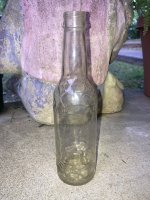Nov 5, 2022
251,920 views • Nov 5, 2022
Many people across Northern California on Friday reported seeing a bright light in the sky tumbling down. Several people captured the phenomenon on camera. Video taken from El Dorado County showed a bright ball descending from a dark night sky.
he can probably build a mansion if he can find the meteorite
251,920 views • Nov 5, 2022
Many people across Northern California on Friday reported seeing a bright light in the sky tumbling down. Several people captured the phenomenon on camera. Video taken from El Dorado County showed a bright ball descending from a dark night sky.
he can probably build a mansion if he can find the meteorite













